Part 2
We go back in history now to the Battle of Hirwaun Gwrgant (1093), which is well documented. Rhys ap Tewdwr was slain there as was Goronwy his son. The defeated forces came down the Dulais and Neath Valleys just above Neath where the names of the farms and streams come together to give a clearer picture, probably, than the written accounts.
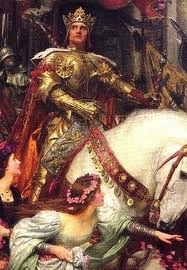
“From Monks to Millennium – The History of the village of Cilfrew” (2000) states as follows:-
"There is a legend in Cilfrew. It has been handed down for centuries by word of mouth, through familes and told to children in Sunday School. Many, many years ago when Glamorgan was known by a different name, Morgannwg, Meisgyn or even before that when it was called Gwywsing we had a King, King of his own Kingdom similar to the Glamorgan of today. King Hywel had a son, also named Hywel. There was much strife at that time, brother against brother, Kingdom against Kingdom and Welsh against invader. There was to be a battle, King Hywel amassed his troops at his stronghold and hideout in the valley. The opposition was to come from the next valley at dawn the next day. The troops made camp, their fires burned and the great feast before the battle commenced. The Bard Teulu arrived and she sang and danced for the troops while they feasted (welsh warriors feasted before going into battle and were entertained by a bard) and drank their fill. Her name was Betti Fach (little Betti). At dawn the next day they advanced up from the floor of the valley to the lands on the slopes of the high bleak mountain where the battle raged. Prince Hywel fell, killed with his horse, fighting for his lands. His troops were routed and massacred. Darkness fell and the battle was over. The broken bodies were buried on the ground where the battle had raged together with the white stallion killed with his master.
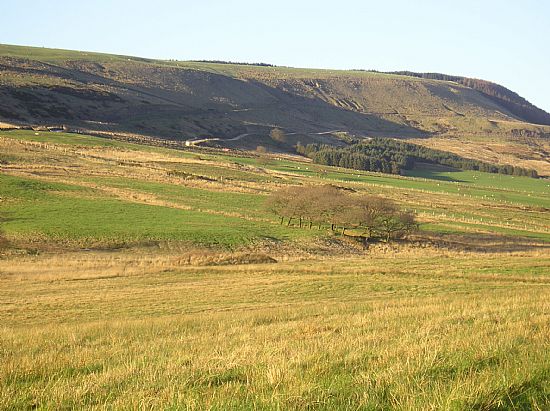
March Hywel Mountain
The King named the mountain in honour of his son and his beloved stallion, March Hywel (Hywels stallion). The field where the bard entertained the brave warriors is known as ‘Cae Betti Fach’(little Betti’s field) to this day And the field next to it ‘Cae March Gwyn’ (field of the white stallion). The stream that runs through the land has been forever named ‘Nant Ysprid’ (ghost/spirit stream) and burial mounds lay today on the slopes of the mountain. They say there was a plaque buried in the ground of Glyn Bedd (valley of tombs) to mark the spot where the Prince and his horse fell and it could be uncovered today".
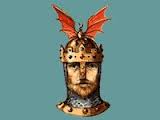
Add to this legend the fact that the farm Gelli March in Cilfrew, is documented in the 17th century as having been called Coll hi’r March (yearning for a lost horse) and that just over the mountain lies another burial mound close to the village of Cil y Bebell (circle of tents) and you have the history of a battle. But what battle – was it the battle of Hirwaun? Where Iestyn ap Gwrgant fought with the Norman Robert Fitzhammon against Einon ap Collwyn; where they say Rhys ap Tewdwr was slain near Hirwaun and his son Goronwy was also slain. Cynan the brother of Goronwy and son of Rhys was drowned in the marsh between Neath and Swansea at Pwll Cynan ( Crymlyn Bog) where they say the water nymphs the Ellyllion of the Tylwyth Teg drew him under the water to the first city of Swansea that sunk there in an earthquake. The Druids altar still overlooks the spot on the hill at Jersey Marine.
And Arthur is lost – is the horse buried at March Hywel the horse of the son of Rhys Tewdyr ? If not, whose horse and son is it? The secret must lie in Crymlyn Bog with the first City of Swansea and those who dwell there.
The Seven Sisters Hoard
The Dulais Valley where March Hywel stands looks down on the village of Seven Sisters where over a hundred years ago a discovery was made :-
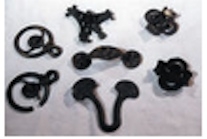
A mixture of Celtic and Roman material, such as tankard handles and pieces of harness. Found in 1875 by a local farmer. They were kept as children’s playthings until their historical importance was recognized in the early 20th century by the local doctor. The originals are now in the National Museum of Wales in Cardiff and replicas are held at Neath Antiquarian Institute.
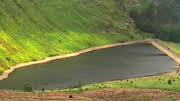
Llyn Fawr - Hirwaun
Hirwaun lies four miles north west of Aberdare in Rhondda Cynnon Taff, South Wales. The village sits to the south of the Brecon Beacons National Park, close to the Heads of the Valleys Road.
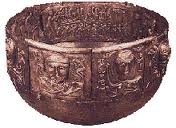
A Cauldron found at Llyn Fawr
In 1911, Llyn Fawr was drained, and many historical artefacts were found. The Llyn Fawr hoard was discovered during the construction of a reservoir. It contained many objects from the late Bronze Age, but also a number of iron objects, notably an iron sword. Two other iron implements were found, a spear and a socketed sickle. Bronze items included two cauldrons and axeheads. The items appear to have been placed in the lake as votive offerings. The sword is thought to date from about 650 BC. It is the earliest iron object discovered in Wales.....
The Historians A.T. Blackett and Alan Wilson state in their 1980 book
“Arthur King of Glamorgan and Gwent”
The Location
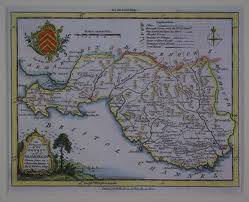
The location of the Arthurian folk legend is quite definitely the area now known as East Glamorgan, stretching from the Cardiff, Penarth, Barry and Aberthaw coastline to Aberdare, Hirwaun and across to Glyn Neath. This territory was anciently known as Penuchel and Arthur, in the Brecon Manuscripts, was recorded as Arthur Penuchel.
The area includes the Cardiff plain, the Vale of Glamorgan and the hill country stretching North from Tongwynlais, Llanharran and Llanharry. It includes the Aberdare, Rhondda Fach, Rhondda Fawr, the Rhumney Valleys and over to the west, the Maesteg and Western Valleys on over to Neath, including the coastal areas around Margam and up on over the mountains down to the great open valley between Glamorgan and the Brecon Beacons - The Vale of Neath. The highest point of the Black Mountain was Cadair Arthur - Arthur's Chair.
The Lake
The Lake into which Arthur ordered the sword to be thrown is also in his territory of Penuchel. This lake we will describe in detail elsewhere and it lies in North Glamorgan, over the mountain at the top of the Rhondda Valley on the slopes descending to Hirwaun.
Into this strange lake ancient peoples threw offerings of cauldrons, knives, sickles and a sword. The sword found in the bed of the lake was not a Celtic fifth century sword, but the remains of an ancient Halstaddt culture sword of around 500 to 400 B.C. This fits it well as the very sword of Ares, for Excalibur was not a battle sword but a magical weapon, a religious symbol and totem, held in a rock or plunged into the earth or a mound of turf.
Certainly someone threw this ancient sword into the mountain lake in Glamorgan.
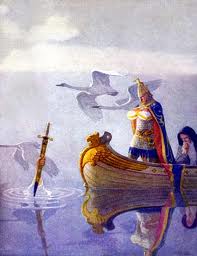
The Geographical and Historical Identity
We have therefore in the territory of Arthur Penuchel, all the necessary geographical features and all the necessary historical remains to fit the Arthurian story completely.
The record of the boy chosen king at fifteen years, the probable presence of Taifalic Goths, descendants of people who had as a god, a sword plunged into the earth or a wooden block, begin the likeness. The lake into which offererings of metal were thrown exists, a sword was found in it. The water goddess of deep water, Margan, existed and a strange shrine of oak was embedded into the centre of the sacred lake.
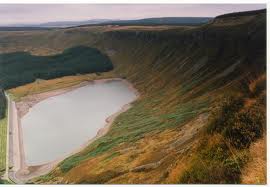
Llyn Fawr
The islands with their monks, chapels and nunneries exist, they lie off Cardiff in the turbulence of the Severn Estuary. The route from the shore at Cardiff to the sacred lake above Hirwaun is exactly as described by Walter Mapp around 1135 A.D.
There was a King of Glamorgan and Gwent named Arthwys. The Mabinogion records a lamed fisher King, an important monarch. Armoured heavy cavalry existed in South Wales in late and post Roman times. We are therefore dealing with stories based on fact.
Arthur and Cave Folklore

The popular legend of Arthur was and is
that he is not dead, but that he sleeps on safe in a cave from where he will one day rise if necessary to rescue his people. The concept of an undying hero, a king for all time past, prent and future, is powerful magic. Strong though he may have been in life, Arthur or his ghost was to prove infinitely stronger. A hero who remained undying and undefeated formed a rallying point, a focus of hope to an oppressed people and an unbeatable national symbol.
There are at least two well known local folk tales which associate King Arthur with sleeping in caves, awaiting a summons to his people's aid. Such tales mean that the inhabitants of the area associated themselves in some way with the great King. Not surprisingly one of these folk tales is located in Glamorgan, the other in the Melrose area of Scotland, an area of Northern British power. Scotland south of the Clyde and the Forth was British and later English, until actually given to the King of Scotland by King Eadred of England in 947 A.D.
Craig y Ddinas - Rock of the City or Fortress
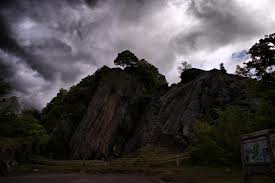
The Glamorgan story is the Craig y Ddinas - Rock of the City or Fortress - Cave near Glyn Neath in central Glamorgan. This cave is reputed to be the place where the sleeping Arthur rests down through the ages with his knights. It has therefore an exact known location or area and it is within the territory we are demonstrating to be that of Arthur.
Legend tells us of how a Welsh cattle drover met with a wizard who asked him from where he had cut the hazelwood staff he was carrying. The wizard asked the cattle drover to take him to the tree from which he had cut the staff, for the tree would mark the site of a great treasure. So the drover led the wizard to the tree and together they proceeded to dig up the tree by the roots. In the cavity they found the entrance to an underground passage and when they went through the passage they reached a great cave.

At the entrance to this great cavern there hung a bell and past the bell, along the cave,there lay King Arthur and his warriors, sleeping in rows. Beside the sleeping warriors lay large mounds of gold and silver and the wizard told the cattle drover that he could take as much of the gold and silver as he wished. The wizard warned the man that he must be careful not to touch the bell, for is he did the warriors would wake. They would ask him if it was day and he had to tell them 'No, sleep on', and they would return to sleep.

The cattle drover returned to the cave twice and each time he was greedy and carried more gold than he should. As he squeezed out of the cave he touched the bell and the warriors awake and asked 'Is it day?', and he whispered,'No, sleep on'. On his third visit to the cave the cattle drover again carried too much gold and silver and as he crept past the bell into the passage, he again touched it and it rang. This time the warriors leapt up and asked,'Is it day?', and in his confustion the drover forgot the correct answer. The warriors siezed him and they beat him so badly that he was crippled for life and flung out of the cave. In his crippled state he could never find the cave again.
The old story has grains of ancient truth, for there is mention of mounds of gold and silver. This ties in wiuth the known facts of the Celtic people depositing their gold and silver in piled heaps which no one dared to touch. A Roman historian tells how in the conquest of Gaul one Roman general plundered no less than 110,000 lbs of silver and 100,000 lbs of gold from one Celtic treasure hoard. Then the Anglo Saxon Chronicle relates that the British gathered together all the treasures of Britain and hid them and no man saw them again.
The mention of a bell is again typically old Celtic, for bells seem to have had a special fascination for the Welsh. They figure largely in the most ancient of the Saints 'Lives', possessing magical attributes and being trasured by the saints as articles of supreme value.
End of Part 2

